| This is a collection of my father's WWII letters and images. During his life he never talked about any of this, he died in 1979. This is a work in progress, for info email alan@mcanultydesign.com |
||
(See also this Stars & Stripes history of the 75th Infantry Division in WWII)
290th Infantry Combat DiaryPROLOGUE TO BATTLE An undercurrent of expectancy surged through the 290th Infantry in the early part of October 1944 when the breath of soft ocean breezes was wafted across the brown earth of KENTUCKY on wings of rumor. Throughout Camp Breckinridge rumor was rampant that the division would soon shake the dust of KENTUCKY from its youthful heels and head across the sea to on active theater of operations. But veteran cadre-men, recalling innumerable time-consuming "dry runs" by their former organizations prior to overseas shipment, promptly inaugurated a campaign of rumor debunking seldom equalled or more willingly accepted by an army that has long nurtured rumor as an important source of information. An undercurrent of expectancy surged through the 290th Infantry in the early part of October 1944 when the breath of soft ocean breezes was wafted across the brown earth of KENTUCKY on wings of rumor. Throughout Camp Breckinridge rumor was rampant that the division would soon shake the dust of KENTUCKY from its youthful heels and head across the sea to on active theater of operations. But veteran cadre-men, recalling innumerable time-consuming "dry runs" by their former organizations prior to overseas shipment, promptly inaugurated a campaign of rumor debunking seldom equalled or more willingly accepted by an army that has long nurtured rumor as an important source of information.
Despite attempts to discount prevailing trends, rumor gained substance when it become known that a regimental crating detail was at work preparing water tight containers for materiel and records most likely to suffer In the event of a juncture between troop transport and torpedo. Rumor gave way to fact when, on 13 October, the second alert was given the regiment and on 14 October, as the troops marched aboard trains waiting to move them to a point of embarkation, even the most skeptical individual would have been inclined to agree that the 290th Infantry, commanded by Colonel Carl F. Duffner. was making the initial move of a distinctly "wet run".
Camp Shanks was a brief four day pause that featured numerous checks of clothing and equipment, considerable orientation and a chance to say farewell to NEW YORK for what might prove to be a long time.
An alert was followed by a forty mile rail trip to WEEHAWKEN, New Jersey, then aboard a broad-beamed Weehawken Ferry that had once carried many of the 290th men across Long Island Sound to civilian jobs in the city. As the boat drew away from the dock the skyline of Manhattan stood in silent salute against the blue-black sky and there were few men who did not strain for a last glimpse of a dark, towering Miss Liberty as the ferry passed beneath her and moved on toward the docks of Staten Island.
The USAT Brazil, flagship of a large, escorted convoy sailed from New York harbor the 22nd of October on what was to be a journey without incident. Five thousand troops were packed aboard the twenty thousand ton vessel and with the exception of on occasional stomach that proved incapable of adapting itself to seafaring, the voyagers suffered nothing more serious than the customary inconveniences of overcrowding.
Ten days later the Brazil slipped into the harbor of SWANSEA, Wales and on the 3rd of November troops debarked and moved by train and motor to billets in and around the resort town of PORTHCAWL, Wales.
Training and final preparations for combat kept men of the 290th occupied during the day but evening hours were spent in accordance with the dictates of the individual conscience. Dates with Welsh girls, dances arranged by Special Services and pleasant evenings of conversation over glasses of ale or stout seemed the more popular forms of relaxation. Restaurant dining proved interesting in that the menu occasionally featured tasty English delicacies and invariably offered the standard wartime fare of "spam and chips".
The five weeks at PORTHCAWL and adjacent towns were pleasant ones with military activities at a minimum and passes to nearby towns plentiful. But Wales was only an interlude before moving on to the job for which the 290th Infantry had been sent overseas and on the 9th of December the regiment deported by rail and motor for SOUTHAMPTON, England.
Those who travelled by rail crossed the English Channel on the liner "Monrovia" and the channel boat "Invictia", the latter an English craft remembered most vividly by her passengers for the unique fare served under the guise of food during the two-day voyage. On the 14th of December the channel crossing was completed and troops debarked onto the rubble strewn beach of LE HAVRE, France, the shattered ruins of a once great port giving most men their initial contact with the devastation wrought by war. A motor convoy took the men to a sparsely settled portion of the Normandy Plain near the village of YVETOT where shelter tents were pitched in fluid darkness and intimate contact established with the mud of France.
Troops making the trip to SOUTHAMPTON by motor convoy arrived in that city on the 11th of December and sailed for France on three LST's later in the day. Arriving in ROUEN on the 13th of December, the convoy debarked and proceeded to an assembly area near the town of YVETOT and adjacent to that occupied by other troops of the regiment, there joining fellow soldiers in the swirling mire of the Normandy Plain.
The 290th Infantry left the assembly area on the 19th of December, traveling for two days in bitter weather across northern France and a part of Belgium by motor convoy and box car, utilizing the some 40-and-8 cars that had been the scourge of doughboys In World War I.
Troops arrived in HASSELT, Belgium, on the 20th of December and immediately set about me task of establishing a Command Post. Though the advance unit was some twenty miles from front line warfare, the site of the CP proved to be directly beneath the aerial path followed by buzz bombs venting their destructive force upon the port of Antwerp. The eerie path traced by the jet propelled monsters across a fog-laden sky gave many an otherwise brave man a peculiar feeling of helplessness. Every quarter hour a flying bomb lumbered across the sky, identified by a sound not unlike that of a heavily-laden truck laboring up a steep incline and when an occasional robot seemed to be nearing the end of its fuel supply, soldier hearts skipped a beat in tune with the laboring engine until the lethal sky rider had passed on.
The German counter offensive in Belgium brought an abrupt change of mission and sector in which the 290th Infantry was to enter the fray. With von Rundstedt threatening a full-scale breakthrough and the entire strategy of the western front endangered, the 290th Infantry streamed out of HASSELT by motor convoy shortly after midnight of the 22nd and raced for the ruptured lines of the First United Stales Army.
The final chapter of the prologue to battle became a part of the record on 23 December when the 1st Battalion was attached to the 3rd Armored Division. On the following day, 2d and 3d Battalions, 898th Field Artillery, Company B 629th TD Battalion, Company B 750th Tank Battalion and Company B 275th Engineer Battalion, units comprising the 290th Regimental Combat Team, moved forward to establish a defensive area in the vicinity of BIRON, Belgium. This order had scarcely been accomplished when it was followed by a second one directing units of the 3d Battalion to occupy the town of HOTTON and hold it at all costs.
The prologue to battle had ended ---- days of combat were at hand.
THE BELGIAN BULGEVon Rundstedt's drive against the thinly-held Belgian west wall occupied by the First United Slates Army had developed into a gigantic three-pronged thrust, the center prong blunting itself against Bastogne, the northern prong curving northward in an attempt to encircle portions of the 1st and 9th Armies In that sector while the third attack swung into Belgium then curved in a southerly direction to threaten the remainder of the 1st Army and a portion of the 3rd Army.
With the mission of repelling further advances in their portion of the northern sector, the 290th Infantry Combat Team was committed to battle and an attack order issued to the 2d and 3d Battalions on the evening of 24 December, the 2d Bn to attack the town of WY with the 3d Battalion attacking enemy-held high ground between SOY and HOTTON.
With G Company spearheading the advance, the 2d Battalion moved across the line of departure 45 minutes before midnight expecting to encounter resistance at any moment. But the early hours of Christmas morning brought no contact with enemy forces and the wooded area north of WY was occupied without casualty. Plans were immediately formulated to attack WY from the north at dawn with E and G Companies conducting a frontal assault. A firmly entrenched enemy met the attacking force with a hail of rifle and machine gun fire but the attackers continued to press forward, undismayed by the initial appearance in their midst of sudden death. Inside the town, sniper, machine gun and 88 mm fire made progress difficult but platoons and squads pushed forward, clearing houses and reducing strong points as they advanced. Supporting tankers reduced the few remaining houses sheltering automatic weapons and by dusk of Christmas Day, Company G reported the town of WY had been cleared of enemy resistance. Under cover of sheltering darkness, Companies E and G with machine gun platoons from Company H moved to high ground south of WY and prepared defensive positions as a bulwark against anticipated large scale attacks by enemy units.
Troops of the 3d Battalion crossed their line of departure at a time coinciding with that of the 2d Battalion, encountering some small arms fire while reaching their initial goal. The attack was launched with aggressiveness and vigor against a thoroughly entrenched foe who availed himself of heavy and accurate artillery fire to disrupt attacking forces; casualties were heavy and progress negligible. Additional ammunition was sent forward to alleviate a threatened shortage and more litter bearers came up to evacuate the wounded. The battalion was unable to advance against the wall of steel being hurled at it by the enemy and in the early afternoon received instructions to cease aggressive action and await a coordinated attack.
A coordinated attack employing Companies I, K and L with Company F of the 2d Battalion and elements of the 629th TD's jumped off in mid afternoon. Resistance to the attack was intense but although many men fell during the crucial stages of the advance, the attackers were not to be denied. Company K, though suffering severe losses, fought on to capture its objective and gain the eternal respect of the regiment and division.
Casualties had been numerous and those men who found time to allow their thoughts to stray from warfare found it disheartening to know that comrades had fallen on Christmas Day, a day that under happier circumstances might have been devoted to worship and peace. Though no further word of their splendid work is made, it is to be understood that the Chaplains moved continuously through this campaign and those that followed, the front tines their home, ministering to the spiritual needs of the men their only consideration.
Strengthening defensive positions was of primary importance on the 26th with patrols actively engaged in keeping close check on enemy positions and intentions. The 1st Battalion, its assignment with the 3d Armored Division completed, reverted to regimental control and assembled in preparation for moving into the line on the 27th. Company B was placed in regimental reserve and, with battle lines comparatively static, Company F came out of the line and went into reserve. All available manpower was brought from Service Company to a forward assembly area and held in readiness for combating a counter attack expected to break at any time.
The full weight of the enemy's northern offensive had not yet been felt but intelligence information indicated that powerful forces were massing behind enemy lines for a continuation of the drive against the 290th sector, a drive that thus far had been only momentarily checked.
Opposed by these formidable forces, the 290th Combat Team was notified to cease further attempts at aggressive action; the mission had become the desperately important one of holding superior masses of manpower and mechanical might in check until other units could join the 290th for determined counter offensives.
On the 28th and 29th, fighting was brisk but spasmodic with the enemy launching attacks along all the battalion fronts. Probing for a weakness in the defenses, enemy troops attempted to penetrate through Companies C and E, then through G and L but after sharp fighting the attacking forces were contained and driven back to their original positions. Severe artillery barrages preceded each of the attacks, answered stoutly and effectively by Cannon Company. Though a considerable number of casualties were sustained, the worst enemy of our forces was the weather. Neither clothing nor footgear were equal to the task of repelling the effects of frigid temperatures in which the men were forced to live and fight. Evacuation of personnel suffering from frostbite end exposure was becoming increasingly prevalent and companies, unable to secure replacements for those who were casualties of battle, found themselves confronted with an additional menace.
The end of 1944 saw the 290th Combat Team successfully coping with everything a stalled foe could hurl at it. With the end of the year come welcome relief; not relief from combat but news that the 83rd Division had arrived to bear a portion of the load carried by the 290th. The news was gratefully received by men who for 8 days had occupied a defensive line drawn paper thin because of the width of their sector and the almost continuous clashes with an enemy seeking a corridor through which to pour his offensive strength.
With other regiments of the 75th Division occupying defensive positions to our left, the 84th Division firmly entrenched on our right and the 83rd Division moving up behind the 290th Combat Team, the sector was in the most stable condition It had been in since the German offensive had been halted by an untried 290th Infantry Regiment some 8 days before. As 31 December 1944 gave way to 1 January 1945, the 2d Battalion spoke for the entire regiment when they reported "All quiet on the front".
The 290th Infantry was relieved from attachment to the 83rd Division on the 2d of January and attached to the 84th Division. Patrols along both sides of the front were active and the town of WY, Command Post of the 2d Battalion, suffered a brief but severe shelling by 120mm weapons.
On the morning of January 3d the long awaited counter offensive began to unfold with the 290th Combat Team moving along the right boundary of the 84th Division sector. Company C attacked and occupied the town of MAGOSTER early in the evening and secured important high ground nearby; the remainder of the 1st Battalion and all elements of the 2d Battalion remained in a defensive position throughout the night. After reconnoitering a wooded area to its front, the 3d Battalion was also ordered to remain in its defensive position for the night.
Despite repeated attacks from strong enemy patrols, Company C held its position in MAGOSTER on the following day, receiving invaluable assistance from Company A which had moved up on the left flank to aid in holding the town. 1st Battalion portions In AMONINES were taken over by Company G with E and F extending their defensive positions formerly occupied by G. The 3d Battalion continued patrolling activity along the front and right boundary of the 84th Division sector, supporting the advance of that division.
Patrolling continued to be the 290th mission on the 5th, 6th and 7th with the only offensive action occurring along the 1st Battalion front. Company C occupied BEFFE on the 5th then, working jointly with Company A, moved on to favorable defensive positions south of the town. Company B launched an attack along the L'Ourthe River on the 7th that succeeded in moving only a few hundred yards before unexpectedly severe enemy resistance was encountered, halting the attackers short of their objective. Company A was committed to aid the attacking force and Company B successfully moved forward against stout opposition. The 3d Battalion, less Company I which was occupying the town of WIRPEN, moved to a defensive position adjacent to DEVANTAVE. The 2d Battalion moved from its defensive position to a wooded assembly area east of MAGOSTER, there to await an attack by the entire 290th Combat Team on the following morning.
With the 1st Battalion constituting a reserve, the 290th Combat Team and attached engineers, tanks and TD's, leaped to the attack in the early hours of a snow-laden down
After sharp fighting throughout the morning, 2d Battalion secured initial objectives in the early hours of afternoon then, having reorganized, continued to attack with the 3d Battalion echeloned 500 yards to the right rear. By nightfall the regimental zone of action had been cleared and all objectives secured.
The 9th and 10th of January were spent in organizing the defenses of objectives taken by the Combat Team on the 8th. The 10th also brought word that the 290th Combat Team had been relieved from attachment to the 84th Division and returned to control of the parent 75th Division. With the return to 75th Division control, the 290th Infantry was to enter division reserve, the first relief afforded the regiment since it had been committed to battle on the 24th of December.
The reserve assembly area was situated in and around the town of ERRES, some twenty five miles from the nearest front-line activity. Although the sound of artillery was faintly audible and an occasional German patrol plane wandered across a cold evening sky, it seemed quite another world to battle weary soldiers who had been forced to accustom themselves to intimate daily contact with death.
Considerably rested after a three-day respite from battle and having acquired four hundred reinforcements, the 290th Infantry returned to the fray on the 14th of January, relieving the 289th Infantry in a defensive position near GOPONNE, Anti Tank and Cannon Companies were brought up from their respective positions at ORDIMANT end LA CHAPELLL to strengthen the regiments tactical situation while K Company was detached from the 3d Battalion and assigned to the 289th with a mission of clearing a wooded area south of PROVEDROUX.
On the 16th, Company K reverted to regimental control, having completed Its mission with the 289th Infantry. Patrol clashes were frequent and enemy mortars and artillery active throughout a greater portion of the day, harassing our troops but causing slight casualties.
The 290th Combat Team as a member of the 75th Division was relieved from its attachment to VII Corps and attached to XVIII Corps (Airborne) on the 17th --- the division was to remain with this organization for the remainder of its stay in the Belgian sector of the Ardennes Campaign. After sending combat patrols into VIELSALM in the morning and finding it unoccupied, the 1st Battalion moved into and occupied the town at 1400. The 3d Battalion then moved forward from its assembly area and passed through the 1st Battalion, attacking to the east and occupying NEUVlLLE; a swift reorganization was followed by a vigorous attack to the town of BURTONVILLE. When the 3d Battalion had passed through their lines, the 1st Battalion launched a successful attack to the northeast against VILLE-DU-BOIS, there reorganizing and driving into PETIT THIER before nightfall.
Fighting raged throughout the night with the 3d Battalion taking BURTONVILLE on the evening of the 17th but meeting resistance of such intensity that the battalion was unable to secure the town until morning of the 18th. Losses were high and repeated calls were received at regimental headquarters for more blood plasma and additional litter bearers. Continued bitter weather and enemy action had combined to reduce the strength of most companies to a platoon or less, making necessary offensive action a matter of courage and daring for the few men able to carry on with their duties.
The 1st Battalion reinforced by a platoon of tanks and a platoon of TD's continued their attack to crossroads at PATTEAUX; occupying the crossroads and vicinity without encountering serious resistance. Positions were consolidated and an attack launched across the road but the battalion had progressed no further than a few hundred yards when the foe unleashed a withering fire that blighted the entire 1st Battalion attack. Defensive positions were quickly dug and the battalion prepared to hold ground gained against possible counteraction. The 2d Battalion had come out of regimental reserve to occupy positions along the Neuville-Burtonville road but their attempt to launch an attack similar to that of the 1st Battalion was met by vicious enemy resistance so defensive positions were immediately prepared. The entire 290th Combat team front had suffered a temporary stalemate. Cannon Company and the 898th Field Artillery went about the task of loosening the enemy grip on positions in preparation for further assault.
First Battalion jumped off early the following morning in a coordinated attack, smashing into German positions with their remaining offensive strength. Opposition rose to meet the challenge along the entire battalion front with exceptionally strong points of resistance in Company A's sector, but despite determined enemy action the battalion objective was taken and positions secured on newly-won ground. The 2d Battalion jumped off and encountered bitter resistance 400 yards from their objective; J platoon from Company K were sent into the 2nd Battalion sector to attack from the north and met slight resistance in moving onto the battalion objective. Caught between fire from Company K and the 5d Battalion, enemy forces chose to fight on and were not eliminated until mid-morning of the 20th. Meanwhile the 3d Battalion had encountered little difficulty in its sector with Company I reaching the objective shortly after dark and Company L taking its position shortly thereafter.
On the 20th of January, the enemy made a desperate attempt to stem the tide and regain his lost initiative along the entire sector. It was a day of frequent and recurring enemy assaults upon our positions. Company B was attacked by foot troops supported by armor and was forced to withdraw 1000 yards ---- a counter attack was attempted but it proved unsuccessful.
The 3d Battalion continued attacking SE of BURTONVlLLE and gained possession of high ground there while the 3d Battalion, with G Company attached, launched a counter offensive toward FM DES FLAMANDS after an early morning attack by enemy troops and armor had forced Companies I and L to withdraw approximately 1000 yards. Attempts to counter attack and regain lost ground proved ineffectual but later, with G Company attached, a successful battalion counter attack drove the enemy off his recently captured territory and gained additional ground for the battalion. Anti-mechanized protection was being provided the battalion and combat team by Anti-Tank Company, ranging along the flanks and rear of the division area.
An attack through the 1st Battalion sector by 2d Battalion forces was made on the morning of the 22nd, troops encountering very heavy fire from automatic weapons and mortars in a heavily wooded sector of KAPELLE. Frontal assaults failing, the 2d Battalion held its position until evening when the 3d Battalion passed through the 3d Battalion position and gained the objective against slight opposition. The enemy had reached a point where he had neither manpower nor equipment for a lengthy stand and could do nothing but fight a delaying action, giving grudgingly and extracting a price in blood for territory won by our forces.
The 290th Combat Team was relieved by the 289th Combat Team at 1000 hours on the 23rd of January. This was to be the last combat appearance of the 290th Infantry in the Belgian Bulge, a sector in which original lines had been virtually restored when the regiment departed the sector. The heroic achievement and courageous action of men who had been green troops a scant month before would remain indelibly imprinted in the battle record of World War II.
On January 26th the regiment was ordered to southern France, there to aid other organizations in bringing that phase of the Ardennes Campaign to a decisive conclusion.
COLMAR CAMPAIGNThe morning of 1 February found the 290th Infantry in division reserve occupying an assembly area in the vicinity of HOLTZWIHR, The 3d Battalion was given the mission of protecting the division right flank along the L'Ill River as there seemed danger of counter attack from the direction of Colmar. The 2d Battalion was moved from the assembly area to BISCHWIHR, closer to front line elements.
The 1st Battalion reinforced moved to a wooded area north of APPENWIHR and relieved elements of the 290th Infantry. The 3d Battalion command to protect the division right flank with Company I disposing of a small pocket of resistance isolated by the push of the 28th Division into COLMAR.
On the 3d of February, the 3d Battalion passed through elements of the 291st Infantry to straighten the division front and had progressed a short distance when the battalion was caught in the heaviest artillery barrage ever thrown upon a part of this regiment. Successfully weathering the fierce shelling, the attack was resumed under cover of darkness and the battalion succeeded in accomplishing its mission.
The 290th Combat Team continued attacking in a southerly direction and reached the division objective by evening of the 4th despite stubborn enemy resistance in the 3d Battalion sector. Attacking south, the 290th drove forward with the 3d Bn giving aid to the 289th in taking APPENWIHR then moving on to capture and occupy BOIS DE WECKOLSHEIM. The 1st Battalion remained in division reserve throughout the morning of the 6th but upon reverting to regimental control moved forward to WOLFGANTZEN and then on to NEUF-BRISACH. The 2d Battalion attacked to the east toward the town of WECKOLSHEIM and successfully occupied it against light enemy resistance. Defensive positions were prepared by the 2d Battalion along the Rhine-Rhone Canal and plans formulated to continue the attack upon receipt of further orders.
The 3d Battalion cleared woods near Weckolsheim and, upon completion of their mission, returned to Weckolsheim to prepare defensive positions along the canal. All elements of the 290th Combat Team were in position for an attack across the canal at dawn of the 7th.
Resistance failed to materialize on the scale anticipated and all units of the Combat Team were able to make good progress. By evening, elements of the 290th Infantry had reached the western edge of the division objective and were pressing forward across the swampy, muddy ground. Morning found elements of the 290th commanding the western bank of the Rhine with further resistance confined to occasional artillery fire from German units occupying defensive positions east of the river.
With the goal attained, the 290th Combat Team was relieved by the 109th Infantry Regiment shortly before midnight of the 8th and moved into assembly area in the vicinity of WECKOLSHEIM and WOLFGANTZEN. The 290th remained in the rear assembly area until 1100 hours 12 February when, acting upon orders received from division headquarters the previous day, the regiment moved out by motor convoy to an assembly area near BACCA-RAT, France.
The mission of the 290th Infantry Regiment in COLMAR was concluded and as a reward for outstanding services rendered in liberation of COLMAR, home of General De Gaulle, the 75th Infantry Division was awarded the Arms of the City of Colmar.
THE RHINELANDA period of rest and waiting followed before orders for the next move were received from higher headquarters. On the 15th of February orders arrived and the regiment began movement by rail and motor to an assembly area in the vicinity of PANNINGEN, Holland. The trip from southern France to Holland was accomplished in weather that had taken a gratifying turn for the better. Pleasant climactic conditions made the box cars tenable if not especially comfortable and the morale of all troops improved noticeably; in the motor convoy a similar situation prevailed and the regiment arrived at the assembly area with morale reaching a new combat high.
Troops moved to an assembly area in the vicinity of HELDEN, Holland where improvised facilities for billeting the regiment hod been located and relief of British troops occupying the position accomplished. It was a static defensive position with our troops occupying positions on one side of the Maas River and the enemy equally well entrenched on the other. Harassing artillery and mortar fire, improvement of defenses and occasional patrol activity by opposing forces constituted front-line activity. These activities occupied the last days of February for members of all companies along the river line with intensive training in assault boat techniques taking place in rear areas.
The entire regiment Travelled 33 miles by motor from the assembly area at HELDEN on March 2d to a new assembly area near BUCHTEN, BORN and HOLTUM, Holland. Only a few hours were spent in this location and on the 3rd the regiment moved into an area near VENLO where the battalions were almost immediately alerted for a further move to the division forward assembly area near WESTERBROCK, Germany. The 290th Infantry entered Germany for the first time to relieve elements of the 291st Infantry providing a screen for the division sector. Units of the First Canadian Army were contacted by members of Headquarters Company I and R Platoon north of the 290th sector where this regiment relieved the 291st to continue screening activity.
The 6th of March brought orders for the regiment to move to a new assembly area south of KALDENKIRCHEN, a move completed on the morning of the 7th. Early on that morning small arms fire was heard in the vicinity of the regimental Command Post; Headquarters and Service Companies were alerted but investigation failed to disclose the presence of enemy troops. The Command Post and Provisional Battalion had been provided billets in LEUTHER-HEIDE, 1st Battalion in the town OF HEIDHAUSEN, 2d Battalion in BRUCH and the 3d Battalion established themselves in HULST, Germany.
From the 8th to 11th the regiment was occupied in clearing the VENLO-ROERMOND-KALDENKIRCHEN area of isolated enemy points by-passed a few days earlier by other units who had accomplished o breakthrough and did not have time to thoroughly reduce all of the scattered enemy installations in the area. Some prisoners were taken, suspects were processed mine fields marked and large quantities of weapons and ammunition confiscated.
The 290th Infantry moved to an assembly area near LINFORT on the 12th of March, there relieving elements of me 35th Infantry Division in positions along the Rhine River near RHEINBERG and BUDERICH. Some elements were relieved under cover of darkness because of the comparatively small) distance separating our lines from those of the enemy, but the entire relief was accomplished before dawn of the 13th. Defensive positions were improved and close cooperation maintained with the Canadian 156th Brigade occupying a position to the left of the regiment. Outposts were established and patrols sent out to reconnoiter the west bank of the Rhine while engineer and mine platoons cleared the regimental area of hazards buried by the enemy.
An 11 man patrol accomplished a crossing of the Rhine in the early hours of 16 March but encountered enemy resistance and could obtain no Information. Another 11 man patrol, this from the 2d Battalion, crossed on the same night and succeeded in penetrating some distance without encountering resistance although they did come across some unoccupied positions. Valuable information was obtained by the second patrol while reconnoitering the area.
Positions were again static and activity along the river limited to patrols and occasional rounds of artillery fire. Anti-Tank Company and guns of The TD's were brought forward to a position south of WALLACH on the 17th and delivered direct fire on observation points and buildings east of the Rhine. Considerable damage was done to enemy installations and no counter-battery fire received by units involved in the operation.
A seven man patrol from the 2d Battalion crossed the Rhine during the early hours of darkness on the 18th and discovered most defensive positions occupied by no more than two or four men. Since no resistance was encountered, the patrol made a detailed terrain study of road nets through-out the German forward defense sector.
A five man enemy patrol was sighted in the Company G area on the night of 21 March and a patrol immediately set forth to contact the prowling foe. Contact was made and in the ensuing fracas four of the Germans were killed and an officer captured.
The mission of the 290th since relieving the 35th Infantry Division had been remarkably successful in all of its phases. The 290th Combat Team, acting as a screening force for units preparing to launch an offensive across the Rhine, had prevented the enemy from obtaining information of activity on the west side of the river. The 290th, however, had been able to consistently land patrols on the east bank of the Rhine and obtain invaluable information regarding enemy strength and fortifications.
A four hour artillery preparation supplied by tremendous concentrations of firepower touched off the preliminary action leading to a Rhine crossing at H Hour on 24 March by the 117th and 119th Infantry Regiments of the 30th Division, Crossing through the 290th lines and supported by firepower from our automatic and artillery weapons, the attacking units were able to push forward quickly against very light enemy resistance. With the east bank of the river secured, engineer units commenced construction of two bridges with Companies G and L assigned to thwart any enemy attempts to destroy the bridges.
THE RUHR POCKETAt 1200 hours 25 March, orders were received placing the regiment on a four hour alert to move forward with the 8th Armored Division and word circulated through the company that it would turn into a tank-riding dash to Hanover, 170 miles from the Rhine and halfway along the road to Berlin. But this spectacular assignment failed to materialize and on the 20th the 290th was attached to the 30th Infantry Division, moving across the river and into the area between the Lippe River and Lippe Canal to clear the sector of any enemy troops that might be lurking there.
Attachment to the 8th Armored Division came at noon of the 27th and the three battalions fought as a part of that organization through the 31st of March. The battalions were attached to the various combat commands within the division, functioning smoothly with the armored units and receiving credit for the reduction of DORSTEN which was taken by the 2d Battalion on the morning of the 29th after delaying the 8th Armored advance for 24 hours.
On April 1st the 290th Infantry was ordered to relieve the 8th Armored Division and attack through their lines toward the 75th Division objective. With opposition slight, two division objectives were taken within a few hours so the attack to the east was ordered continued with the Rhine Herne Canal as the objective. A coordinated thrust with Company C spearheading atop tanks of the 701st Tank Battalion rolled along virtually unopposed. By mid afternoon of the following day, the 290th Combat Team had reached the objective on the west bank of the Rhine Herne Canal.
Ordered to relieve the 134th Infantry Regiment, the 290th did so on the morning of the 3d and attacked some 1500 yards beyond forward positions formerly occupied by the 134th Infantry, reaching the west bank of the Zweig Canal. Elements of the 289th Infantry relieved the 1st and 3d Battalions at dusk permitting those units to enter an assembly area slightly behind the lines to prepare for action on the 4th of April when the 290th Combat Team would support the division attack by fire.
With the 2d Battalion in reserve, the 1st and 3d Battalions jumped off at dawn of the 6th, encountering slight resistance in the initial stages of the attack. As the attack progressed, the 1st Battalion was delayed by numerous well organized defensive positions which had to be neutralized before the attack could continue forward. The town of OSTUCK was finally cleared of the enemy and the 1st Battalion moved into a new area to establish defensive positions despite heavy enemy small arms fire. The 3d Battalion passed through elements of the 289th but made very slight progress before encountering stiff resistance. Supporting tanks were called upon to break the back of this defensive position and succeeded in so doing, permitting the attacking force to move against DINGEN and BODELSCHWING. Strong resistance was met from tanks, troops and small arms fire with Company B on the battalion left subjected to considerable crossfire from enemy positions. The 3d Battalion pressed home the attack throughout the day in an effort to clear the towns and successfully consolidated their gains in the early hours of darkness.
Fighting was severe on the 7th with the enemy employing every means at his command to stall sustained attacks by the 1st and 3d Battalions. The 1st Battalion, meeting small arm and artillery fire, saw enemy concentrations in in the town of KIRCHLINDE and called for air support. Targets were bombed and strafed with gratifying success and the battalion moved forward, meeting considerably less resistance. Tank and 88 mm guns firing from a point along railroad lines halted the battalion; aerial support was again requested and the planes successfully eliminated armored resistance from that quarter.
A coordinated attack employing tanks, artillery and air support was launched by the 1st and 3d Battalions against the city of FROHLINDE. The battle was bitterly contested with the two battalions suffering a powerful counter attack supported by 88 mm weapons mounted on flat cars moving up the railroad lines from Dortmund. Planes strafed the rail guns while 1st and 3d Battalion troops renewed their attacks against large concentrations of forces, momentarily stemming the enemy counter-assault. Six Battalions of artillery went into action, pouring concentrations of fire upon enemy troops and vehicles reported by air support to be lined along a road behind the lines. The devastating fire from these weapons threw the enemy into a turmoil, wrecking equipment and disorganizing troops. Air support came in again at the conclusion of the artillery barrage and the counter attack was successfully crushed. Gains made by the 1st and 3d Battalions permitted the regiment to cut a main road on all communications from the west leading toward Dortmund.
A dawn attack on the 8th saw the 2d Battalion pass through 3d Battalion positions and join 1st Battalion forces pushing into KIRCHLINDE and MARTEn; this coordinated action cut the rail line leading into Dortmund, virtually isolating the city from the west.
The attack continued throughout the 9th and 10th with the 2d Battalion advancing south and southeast through light enemy opposition to capture OSPEL and DORNEY, then continuing on to the regimental objective. The 3d Battalion followed the 2d Battalion then passed through them to attack and capture DUREN. With DUREN secured, the battalion moved ahead and took STOCKUM, reaching the regimental objective on hour before midnight.
Heavy fighting against bitter, last ditch opposition marked a sustained drive by the 290th Combat Team on the 11th, 12th and 13th of April with the three battalions attacking abreast to adequately cover the large area assigned the regiment. The 1st Battalion advanced toward WITTEN, encountered stiff resistance as they drew near the objective, broke up a large scale counter attack with mortar and artillery fire, then fought a house-to-house battle through WITTEN to reach the Ruhr River. The 2d Battalion followed the 1st Battalion for a short time then changed the angle of attack to south and southeast, meeting heavy enemy resistance but reaching the town of ANNEN. Road blocks and large numbers of riflemen made conquest of the town difficult and after taking part of the town before dark, the battalion held its ground for the night and completed capture of the town early the following morning. The 3d Battalion sector provided equally stern resistance with Company K meeting exceptionally fierce opposition. Air support helped to alleviate the situation and the battalion was able to renew the attack to the objective.
Action along the Ruhr River was bitterly contested by an enemy whose freedom of movement was being curtailed and compressed from all sides. The Ruhr Pocket had diminished to a point where hopelessly trapped units were receiving artillery fire from all directions and foot troops closing in on the foe made their plight hopeless and positions virtually untenable.
The three battalions continued to attack abreast, moving south along the Ruhr River against forces attempting to prevent a rupture of the main road leading east across the river. The 2d Battalion found resistance weakening and took advantage of this condition to drive though to the Ruhr River with Company E wresting the battalion objective from the enemy. The 1st Battalion found defenses in its sector crumbling and reached the Ruhr River objective without undue difficulty. Stiff resistance came in the 3d Battalion sector where the enemy had securely intrenched himself on the reverse slope of a hill slightly north of the river with the avowed intention of defending that high ground at all costs. As elements of the 3d Battalion advanced toward the hilltop, Company F of the 289th came through on the enemy right flank catching the foe in a devastating crossfire. Enemy positions collapsed and the advance continued to HERDECKE with the enemy fighting a delaying action as he retreated. An air strike was made on the town and, immediately thereafter, HERDECKE was offered an opportunity to surrender by Company L; the offer was accepted and Companies K and L moved to the southern edge of the Ruhr River.
The 290th Infantry was relieved on the 14th by elements of the 313th and 314th Infantry Regiments in what proved to be the regiment's last battle action of the European campaign. The Ruhr Pocket had been reduced to a pinpoint and, after a week of rehabilitating personnel and equipment in a rear assembly area near WALTROP, the regiment was ordered to join the parent 75th Division in a 71 mile motor movement to ISERLOHN, Germany.
OCCUPATIONOn the 23rd of April, the 290th Infantry relieved the 5th Infantry Division, assuming the duties and responsibilities of occupying, administering and policing a large area in and around ISERLOHN. The care, feeding and expeditious evacuation of 90,000 Displaced Persons representing every subjugated country posed an appalling problem that demanded adroit manipulation of limited personnel and transportation facilities. Despite innumerable difficulties the task was accomplished to the satisfaction of division and corps Commanders, thus completing an unbroken cycle of successes launched in the snow-covered fields of Belgium on a Christmas Eve that will never be forgotten by men of the 290th Infantry.
Victory in Europe Day, 8 May 1945, found the 290th Infantry engaged in the routine duties of occupation. But though the regiment had been in combat a relatively short time, the contribution it had mode to the halting of German attempts to prolong the war and the final routing of enemy forces who had proposed to hold the line at all costs could not be dismissed lightly. The Ardennes Campaign, Rhineland and Central Europe - - the 290th Infantry had fought gallantly and with distinction in each of these campaigns, the efforts of her fighting sons contributing a brilliant chapter to the fighting record compiled by units during World War II.
|
Letters HomePvt. Wm. D. McAnulty Well Folks, Pvt. Wm. D. McAnulty I haven’t had a whole lot of spare time yet but I’ll write a letter the first chance I get. All I’ve written so far is cards. I don’t know when I’ll move out yet. I hope everybody is well back there. (v-mail) Cpl. Wm. D. McAnulty Dearest Mama, Sgt. Wm. D. McAnulty Dearest Mama & All, Yes, I did tell you when I made Sgt., at least I thought I told you. It was about Feb. 24, right after I came back from the hospital. I’ve had three packages from you but from your letters, I still have one coming. I got the Easter box with the card in it. I got it on Easter Sunday. Pretty good timing. We’re having nice, warm, spring weather lately. This is very beautiful country in the Springtime, a lot like our section Pennsylvania. It makes me rather homesick. By the way, this is German stationery; it’s better than most of the stuff we find. We took a shower today, the first one for about six weeks. We got clean clothes too. I feel pretty good being all cleaned up for a change. We got rations today, five candy bars and a pack of gum. We seldom get that much. We average about one candy bar per week. Oh yes, we even have electric lights here, the first I’ve seen since I left the hospital. We saw a good movie yesterday. All in all, we’re living the life of Riley. It’s too good to last very long. I sent $100 home about two weeks ago. Did you get it yet? How much do I have now? I should have about $490 and seven bonds, right? Well, that’s about all I have for now. There really isn’t much that we’re allowed to write about. Our lieutenant doesn’t like us to write so much because he has to censor our mail but I guess it’s our privilege to write as much as we like. Well so long for now. Sgt. Wm. D. McAnulty In Oct., 1944 (Friday the 13 by the way) we got orders to move out from Camp Breckinridge, Ky. We packed up and the next day we pulled out. We got to Camp Shanks, New Jersey, which is about 10 miles from N.Y.C., on Sunday. We only stayed there four days. The 5th day we got on the boat and left the New York harbor the next day (Oct. 22). I saw the skyscrapers of Manhattan and the Statue of Liberty on the way out. We sailed for twelve days and nights and pulled into Swansea, South Wales on Nov. 3. We stayed on the boat for two days and then rode a train for twenty miles to a town called Porthcawl on the seashore or rather on the shore of the Bristol Channel. This town was small but nice. It was a rich person’s summer resort in prewar days. There were only “G” and “F” companies in this town. The whole division was scattered from Porthcawl and Swansea to Liverpool. Well, we stayed there till Dec. 12. We took some training there and a five mile hike every day. On Dec. 12 we boarded a boat at Southampton, Eng. We went out in the bay and stayed there over night while the convoy formed and the next morning we started across the English Channel. After two days we arrived at Le Havre, France. We rode trucks from there to some place away out in the country, about 30 miles. There we lived in two man tents for 5 or 6 days, I’m not sure which. Then we moved up to Belgium and stayed over night in a crowded, cold barn. The next day we moved up to within 2 miles for the front line. I’m not sure how many days we stayed there (2 or 3) but on Dec. 24 we moved up to a town called Soy, about 1/4 mile from the front line. The next day, we moved up and attacked a small town called Wy. it was on top of a big hill and we had quite a rough time of it before we finally captured the town. We had one killed an quite a few wounded just from our company. (A company is 180 men.) We hadn’t slept a wink on the night of the 24th and didn’t have a bite to eat for two days. About 11:00 Christmas night, I went out and raided a garden and got a head of cabbage which was the same as a big hunk of ice. Some Xmas dinner, wasn't it? (all this is going on during the German counter-attack in the Belgian bulge or sometimes called the Ardennes Salient.) Well, we dug foxholes then and lived in them with nothing more than what we had on for four days. Then we finally did get our bed rolls so we were a little warmer a night. Can you imagine yourself sleeping in a muddy hole hardly big enough to sit in with only clothes you had on? It gets mighty cold in Dec. too. About the 3rd night, at about 3:00 the next morning when you could hardly see 10 ft., the Germans attacked us with infantry men and tanks. Our own tanks were about 4 miles back and couldn’t help us. Boy, we were plenty scared. Out of about 40 men, 5 were killed and 5 wounded that night. The Germans didn’t do so good. We killed quite a few and destroyed two tanks and then they retreated. The next day, i came very near to getting killed. The Germans sent over an artillery barrage and one shell landed right on the edge of the hole. If my head had been three inches higher, it would have been blown off. I guess it was just instinct that made me duck down so most of the blast went over me. It blew my helmet off and destroyed the machine gun completely but I was still okay except for a tremendous ringing in my ears. After that I lost all track of day or date. Days seemed like weeks. After that we quit counting days because they were all the same. We slept very little and ate even less, always walking, digging and fighting, taking one town after another. Then after 19 days we saw the inside of a building again, even tho’ it was an old barn and the roof had been blown off just above where I was sleeping. The next day Jan. 12, I went back to the hospital with trench foot. While I was in the hospital, the outfit moved down to Comer, France but I don’t know anything about that. Going to the hospital, I rode back in a nice warm truck or rather ambulance. Boy was that nice. It was the first time I had been warm since I left Eng. It was sure something compared to those open truck rides. I had come to hate the sight of a truck. Once we rode from midnight till 11:00 the next day on the back end of an open truck. When our legs would fall asleep or get a cramp, we couldn’t even move them or lift them unless everyone got out and took the equipment out. I’ll never forget that truck ride as long as I live. Oh yes, we also got soaking wet and we had to sleep outside that night and every night after and so we couldn’t get dry. Another time, we rode in an open truck for about four hours on the coldest night in Jan. When we got out of the truck, my feet were so numb from cold, I couldn’t stand on them for a long time. Then we had to walk ten miles with a bed roll and pack. We were sure a miserable bunch of men. These are only two of our many experiences. I was in the hospital in Leige, Belgium (a tent hospital and cold) till Jan. 28. Then I went to Verviers, then some where out in the country, then Charleville, France for 8 days, then back to St. Trond, Belgium for 9 days. All these places were replacement depots where the outfit was but we finally caught up with them on the 22nd of Feb. They were on the Maas River and near a town called Venlo, Holland. (I was made a Sgt. here.) We were on one side of the river and the Germans on the other side. After that we were all over the place up until the first part of March. Then we came to the Rhine River at a place called Wallach, Germany near Wesel. We were just south of the British 1st Army. Then came the Rhine crossing and more fighting with our 290th Div. Reg. attached to the 8th Armored Div. Polsum, Germany was our toughest town to capture. I almost got it here too but my luck was still holding out. Then came one town after another, the biggest was Dorsten. Then we circled Dortmund. (We were northeast of Dortmund and circled clear round till we were southeast of it, fighting all the way; always just about five miles form Dortmund itself.) Then the Germans in the Rohr pocket quit and so we quit fighting too. We came back to Waltrop for awhile, then to Grevenstein, then to Oeventrop for about 3 weeks and then here to Hagen. Hagen was a much larger city than Johnstown or Altoona before it was bombed but there isn’t much to it now. I’ve had a few close calls but I’m still here and okay. Our company came to France with 187 men. There are only about 40 left out of that 187. The rest were killed or wounded and have been replaced by new men. typed July 13, 1945 by M.M.M. (transcribed from a letter on receipt by his sister Maxine) (v-mail) Sgt. Wm. D. McAnulty Dearest Mama & All, (v-mail) Sgt. Wm. D. McAnulty Dearest Mama & All, (v-mail) Sgt. Wm. D. McAnulty Dearest Mama & All, (v-mail) Sgt. Wm. D. McAnulty Dearest Mama & All, |
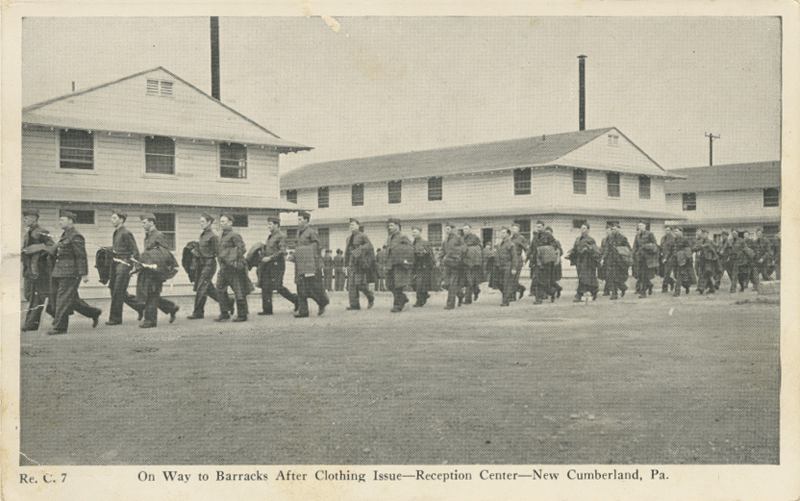 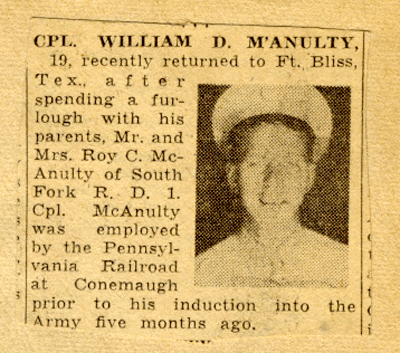 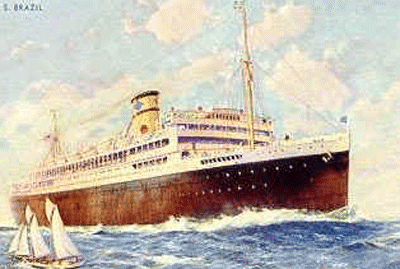 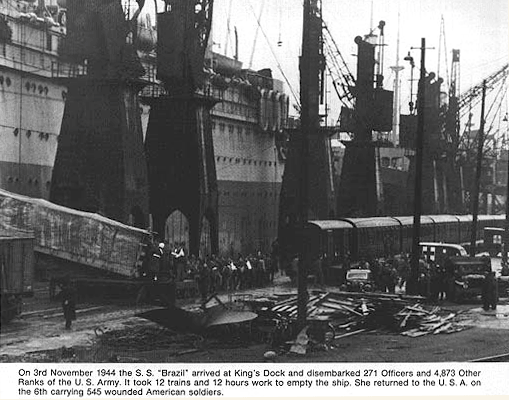 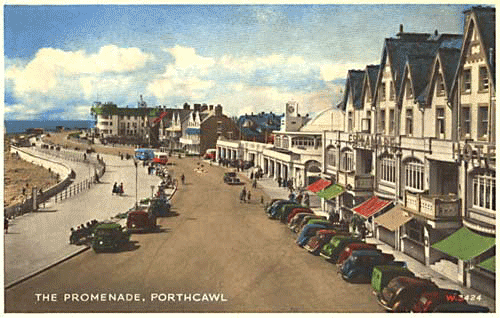 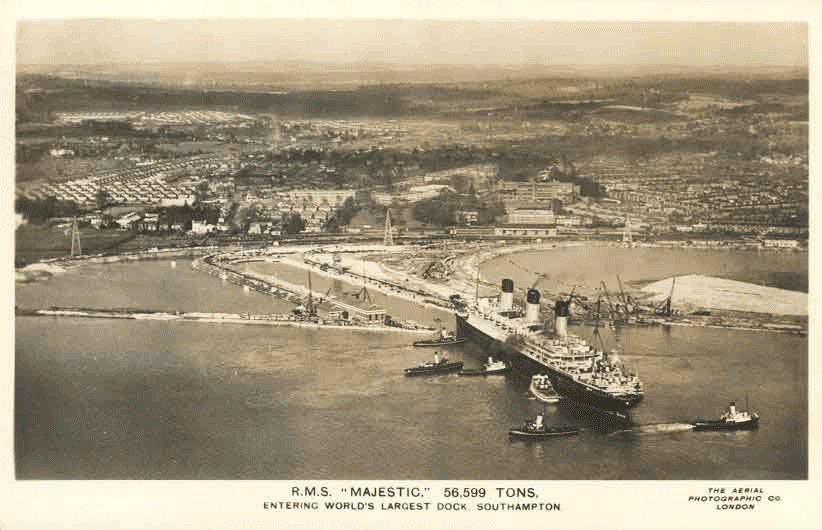 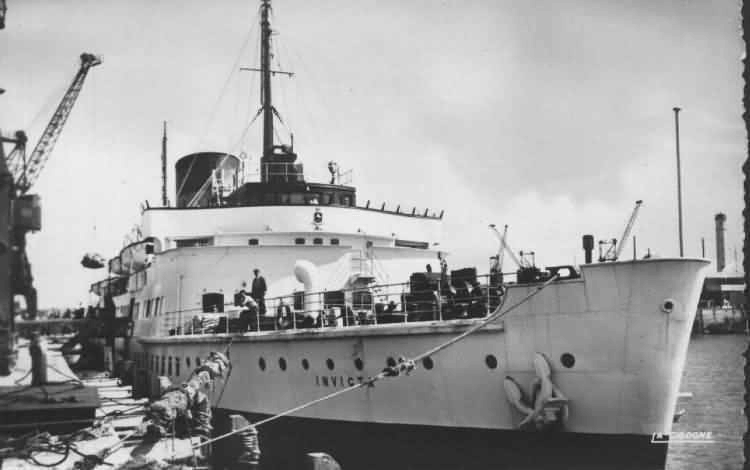 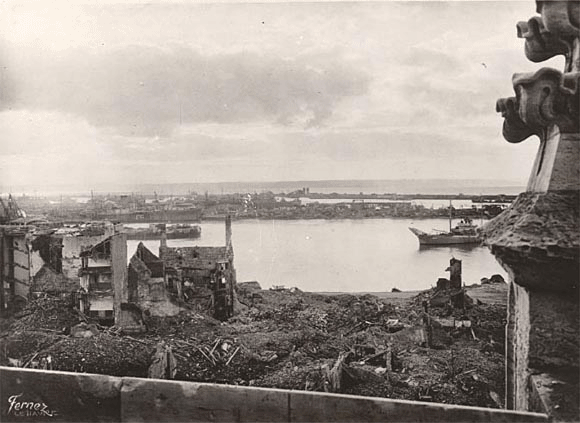 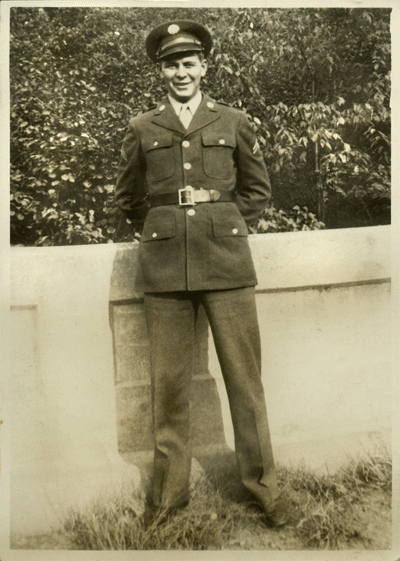 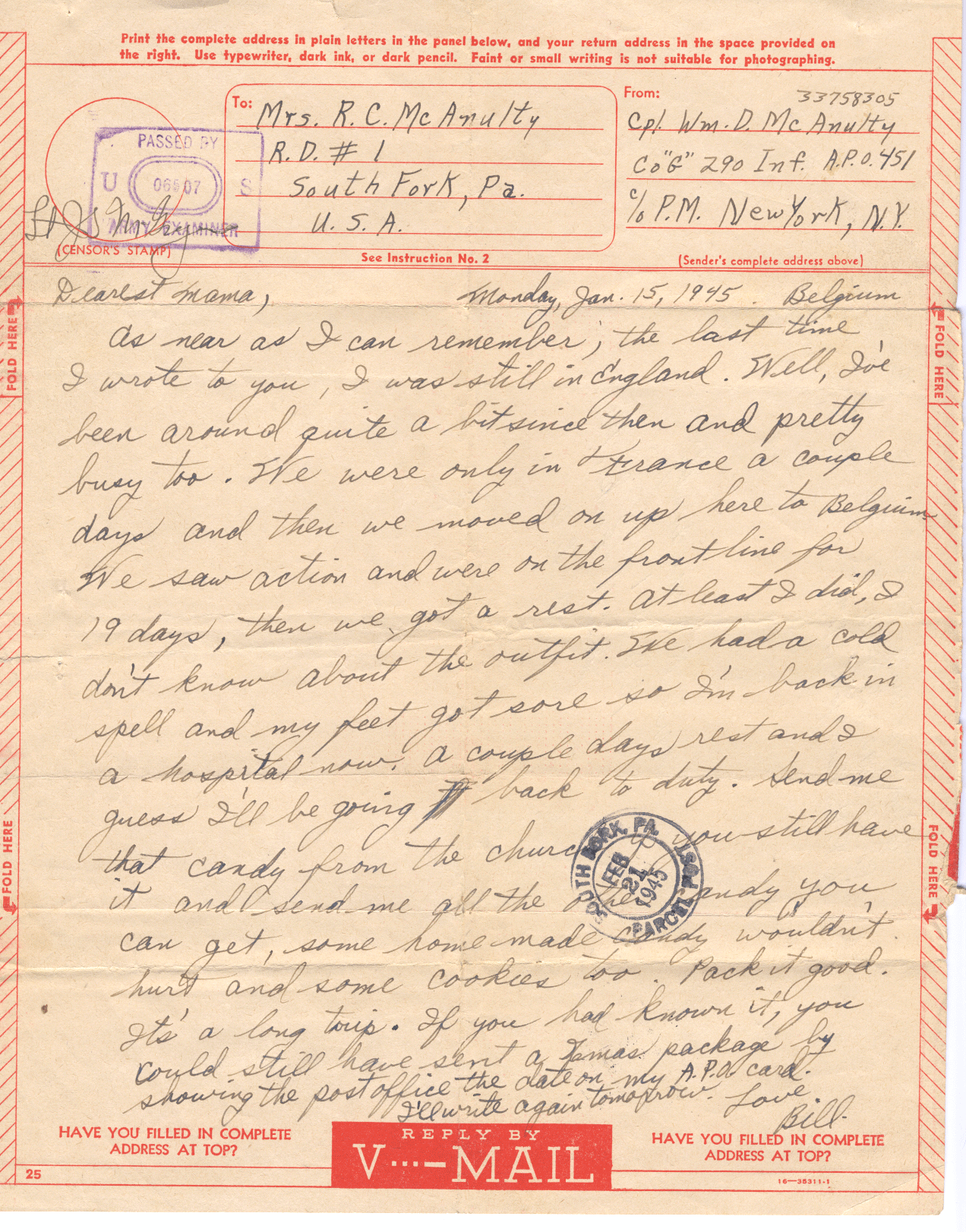 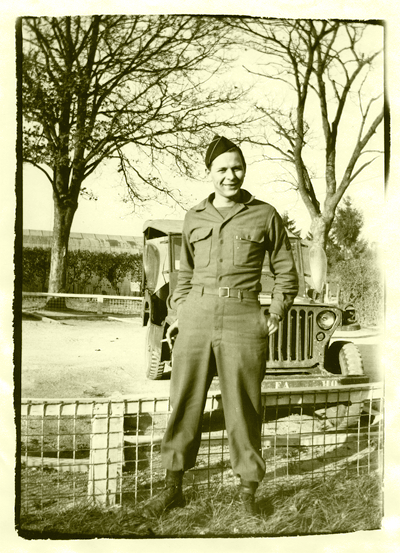 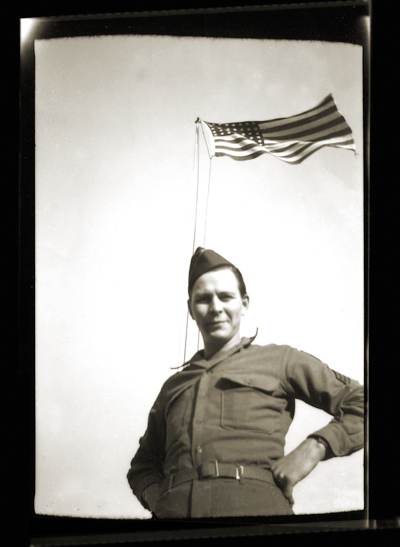 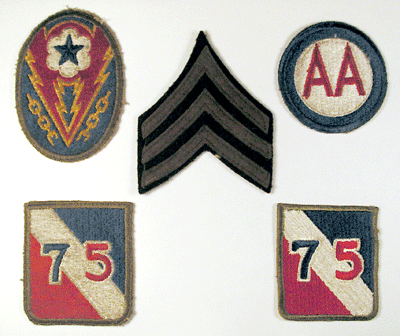  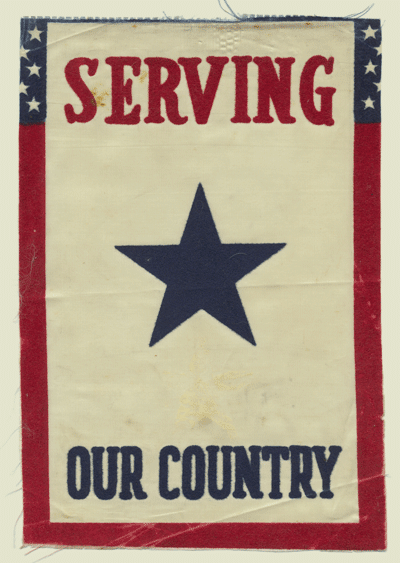 |